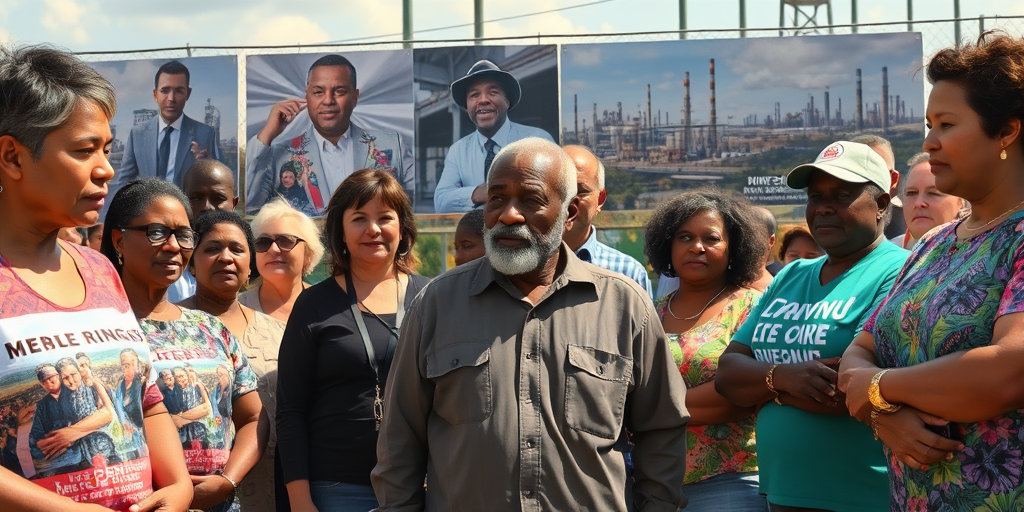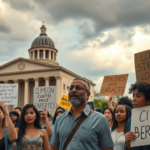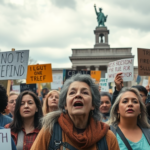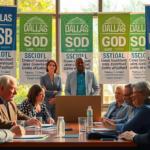**Jerome Ringo: Champion of Climate Justice**
The environmental landscape in the United States lost a pivotal leader with the passing of Jerome Ringo at 70. As a tireless advocate for climate justice and environmental equity, Ringo’s legacy is etched into the fabric of American advocacy, particularly emphasizing the disproportionate impacts of environmental degradation on marginalized communities.
**A Legacy Born from Injustice**
Jerome Ringo’s journey into environmental advocacy began after witnessing the dire environmental consequences faced by Black and poor communities during his years as a petrochemical worker in Louisiana. Known as “Cancer Alley,” this area graphically illustrated the grave disparities in environmental health risks, motivating Ringo to turn his experiences into activism. His efforts brought attention to environmental racism, leading him to become the first Black chairman of the National Wildlife Federation.
Ringo’s commitment went beyond advocacy; he co-founded Zoetic Global, focusing on sustainable energy solutions, underscoring his belief that renewable energy should be accessible, particularly in underprivileged regions. “Community members know they’re at risk every day,” he famously stated, highlighting the chronic dangers posed by industrial pollutants in places like Cancer Alley.
**Global and Local Contexts Intertwined**
Simultaneously, global climate dynamics continue to evolve. The World Meteorological Organization now predicts that global temperatures will exceed the 1.5°C limit by 2027, accelerated by El Niño events and lack of progress in fossil fuel reduction. This projection places more immediate pressure on communities worldwide and heightens risks like those faced by Cancer Alley, making Ringo’s work more relevant than ever.
Dr. Zeke Hausfather, a climate scientist, echoes these concerns, stating, “There is no way, barring geoengineering, to prevent global temperatures from going over 1.5 degrees.” For local communities already on the frontlines, like those in the RGV, policymakers’ indecision costs lives and livelihoods.
**Shifting Judiciaries and Policies**
At the same time, the U.S. Supreme Court’s recent limitation on the National Environmental Policy Act (NEPA) curtails public capacities to challenge environmentally harmful projects, amplifying the urgency of grassroots and local governance as primary engines of change.
Nathaniel Shoaff from the Sierra Club emphasized the implications, remarking, “Fossil fuel infrastructure projects do not exist in a vacuum.” This highlights potential setbacks for communities already battling environmental inequality—further amplified by policy changes that stifle public intervention.
**Glaciers to Gatherings: Global Warnings**
Across the globe, incidents like the glacier collapse in Switzerland that obliterated Blatten serve as reminders of climate unpredictability. Such events underscore the fragility of ecosystems that people depend on for daily sustenance and safety. While not immediately local, they resonate with the Valley’s experiences of hurricanes and floods, both exacerbated by climate change.
**Local Leadership Amidst Federal Retracts**
Amidst these challenges, municipal leaders in U.S. cities have taken pivotal roles. As federal climate actions recede, local initiatives like Cleveland’s green space expansions demonstrate actionable paths to sustainability. Cleveland Mayor Justin Bibb stated, “We as elected officials have to do a better job…,” signaling a paradigm shift towards local solutions.
Cities including New York and Seattle invest in weatherized housing and urban greenery to mitigate climate impacts, inherently improving public health and reducing financial strain on residents by offering more livable environments.
**Global Economic Shifts**
Meanwhile, China’s pivot towards renewable energy investments internationally reflects another significant shift, even as it maintains coal projects. This duality could inspire debates within local communities about balancing economic growth with environmental stewardship, particularly as the Valley seeks economic diversification required for harmony between development and sustainability.
**Conclusion: Continuing Ringo’s Mission**
Jerome Ringo’s legacy empowers communities to pursue environmental justice and demonstrates the impact one dedicated individual can have in reshaping dialogues and policies. As initiatives like his continue, it’s crucial for residents, activists, and local governance to sustain this momentum. His life is a testament to the pressing need for inclusive and urgent environmental advocacy to combat not only the local impacts but also those worldwide.
Local residents seeking to engage with or learn more about continued advocacy efforts inspired by Ringo might consider reaching out to organizations like the Sierra Club or local environmental groups fostering his spirit of activism. This engagement reinforces community resilience rooted in the ideals Ringo spent a lifetime championing.







